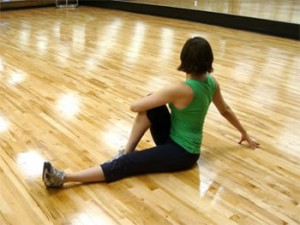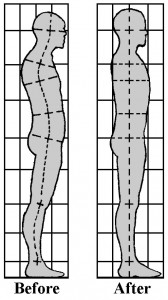Recently I found a very interesting story about a young girl named Janelly Martinez Amador who is suffering from a rare bone condition known as Hypophosphatasia. She has the most severe form of hypophosphatasia, a genetic disorder that prevents skeletal mineralization that occurs in only one of every 100,000 infants. This means that the girl had no bones since to form bones, one needs mto have the progenitor cartilage cells to start calcification and mineralization. The girl didn’t have the ribs to support breathing and this was the thing that was going to be the main concern towards her life.
From USA Today: “New drug gives growth to girl born with no bones”
She was saved by this new experimental drug called Asfotase. From the same article…
“…Dr. Michael P. Whyte, a metabolic bone disease specialist with Washington University School of Medicine in St. Louis, about Janelly.
Whyte was about to start a clinical trial for a new drug, a biologic enzyme called asfotase alfa, that he wanted to try on toddlers with hypophosphatasia…”
“In February 2009, Janelly began treatment with a medicine that had been developed by Canada-based Enobia Pharma Corp. and put on fast-track approval status by the U.S. Food and Drug Administration because it was an “orphan drug” — the first possible treatment for a disease. Shriners Hospitals for Children and Enobia, which has since been acquired by Connecticut-based Alexion, funded the clinical trial.
Janelly had a special port surgically inserted in her abdomen so she could receive infusions of this bone-targeting enzyme.”
So this drug that is supposed to be able to mineralized non-mineralized bone is created by the Canada based company Enobia Pharma Corp.
Since we are height increase researchers, we will not focus too much on the particular case of Janelly but on the drug. Can the drug also cause an increase in the rate of bone endochondral ossification, resulting in increased longitudinal growth in developing children?
When X-rays were done on Janelly, there were no bones that were being shown, meaning that the bones were not absorbing the calcium minerals they are supposed to. It took over a year of this asfotase administering before the young infant was able to move her limbs, indicating that she had developed bones strong enough to lift the load of muscle and skin tissue in her body. When we look back at Janelly, it seems that she was still getting the injections of asfotase three times a week.
From the company that sells/created the Asfotase Enzyme, Alexion Pharmaceuticals…
(Formerly ENB-0040)
Asfotase alfa is a highly innovative human recombinant protein being developed by Alexion for the treatment of patients with HPP. HPP is an inborn error of metabolism arising from a genetic deficiency.1 Patients with HPP cannot produce a form of the enzyme alkaline phosphatase known as tissue non-specific alkaline phosphatase (TNSALP), which is essential for regulating the phosphate levels in various metabolites that are critical for normal bone formation, and also for brain and muscle function.2 The asfotase alfa drug candidate is a recombinant protein designed to address this genetic deficiency by targeting another form of alkaline phosphatase, known as functional alkaline phosphatase, directly to the affected patient tissues. In this way, asfotase alfa is designed to counter the genetically defective metabolic process and prevent or reverse the severe and life-threatening consequences of dysregulated calcium and phosphate metabolism in patients with HPP.
Data from two Phase 2 studies, one in infants and young children up to age 3 with severe HPP, and one in juveniles ages 5-12 with severe HPP, show marked improvement in bone development, muscle strength, and respiratory function with asfotase alfa treatment. In both studies, every patient showed an objective response to asfotase alfa treatment with an improvement in mineral metabolism.1,3
Asfotase alfa was awarded orphan drug designation in the United States and European Union in 2008 and Fast Track status in the U.S. in 2009. If approved, asfotase alfa will be the first and only therapy to specifically address the underlying pathology of HPP through a targeted enzyme replacement therapy.
- MP Whyte, et al. Hypophosphatasia in Children: Enzyme Replacement Therapy Using Bone-Targeted, Tissue-Nonspecific Alkaline Phosphatase. 2010 ASHG, Abst. 3070.
- Mornet E. Review of Hypophosphatasia. Orphanet Journal of Rare Diseases. 2007:2:40 doi:10.1186/1750-1172-2-40. Available at:http://www.OJRD.com/content/2/1/40
- CR Greenberg, et al. Life-Threatening Hypophosphatasia in Infants and Young Children: Results of Long-Term Treatment with ENB-0040, a Bone-Targeted, Enzyme Replacement-Therapy (ERT), and An Algorithm For Patient Management. 2010 ASHG, Abst. 13.
Form the website AlexionPharma.com
FDA Grants Breakthrough Therapy Designation to Asfotase Alfa for Perinatal-, Infantile- and Juvenile-Onset Hypophosphatasia (HPP)
Tuesday, May 28, 2013 7:00 am EDT
LAUSANNE, Switzerland–(BUSINESS WIRE)–Alexion Pharma International Sàrl, a subsidiary of Alexion Pharmaceuticals, Inc. (Nasdaq: ALXN), today announced that the U.S. Food and Drug Administration (FDA) has granted Breakthrough Therapy designation to asfotase alfa for the treatment of patients with hypophosphatasia (HPP) whose first signs or symptoms occurred prior to 18 years of age, including perinatal-, infantile-, and juvenile-onset forms of the disease. HPP is an inherited, life-threatening, ultra-rare metabolic disorder that leads to progressive damage to multiple vital organs, including destruction and deformity of bones.
The FDA also confirmed that adult-onset HPP is “a serious and life threatening disease or condition” and that Breakthrough Therapy designation could be obtained for this aspect of the disease with additional clinical information.
According to the FDA, a Breakthrough Therapy designation is designed to expedite the development of a drug to treat a serious or life-threatening disease when preliminary clinical evidence indicates that the drug may demonstrate substantial improvement over existing therapies on one or more clinically significant endpoints. The Breakthrough Therapy designation is part of the FDA Safety and Innovation Act (FDASIA) of 2012.1
“The FDA’s Breakthrough Therapy designation for perinatal-, infantile- and juvenile-onset HPP recognizes the severe, debilitating and life-threatening nature of the disease, the clear unmet medical need of patients, and the clinical evidence collected to date on asfotase alfa,” said Martin Mackay, Ph.D., Executive Vice President, Global Head of R&D at Alexion. “Asfotase alfa is a highly innovative therapeutic candidate with the potential to transform the lives of patients with HPP who currently have no treatment options and often receive only palliative care for this life-threatening disease.”
About Asfotase Alfa
Asfotase alfa is an investigational, highly innovative, first-in-class targeted enzyme replacement therapy. Asfotase alfa is designed to address the underlying cause of HPP by normalizing the genetically defective metabolic process, and preventing or reversing the severe and life-threatening complications of life-long dysregulated mineral metabolism.
Analysis:
It is said that this new drug asfotase alfa is a type of recombinant protein that manages to stimulate the production of functional alkaline phosphatase aka tissue non-specific alkaline phosphatase (TNSALP), which is essential for regulating the phosphate levels in various metabolites that are critical for normal bone formation
The drugs is supposed to…
“…asfotase alfa is designed to counter the genetically defective metabolic process and prevent or reverse the severe and life-threatening consequences of dysregulated calcium and phosphate metabolism in patients…”
So what does this all mean to the average person? Human bone gets its hardness and strength from a compound known as hydroxyapatite which is a chemical compound made from calcium, a phosphate group, and a hydroxide group, (which probably is taken from a water molecule or hydronium ion). This shows the importance of having both calcium and phophates in the human bone matrix to make it hard. Janelly didn’t have the phosphate groups to work correctly to bind to the calcium and develop the hard crystals that would go into the bone extracellular matrix.
Somehow the asfotase alfa has the ability to get the phosphates and calcium element to work together to mineralize the bones like they are supposed to.
 I wondered whether the last method might be more effective than the other types of stretching since it is only type of stretching that can lossen the vertebrate and disks between the bones slightly more than the others. It is also an uncommon position for the body to be in.
I wondered whether the last method might be more effective than the other types of stretching since it is only type of stretching that can lossen the vertebrate and disks between the bones slightly more than the others. It is also an uncommon position for the body to be in. Like I showed in the recent post on the analysis of Ehlers Danlos Syndrome “A Study On The Possibility That Ehlers-Danlos Syndrome Might Lead To Adult Height Growth“, it is possible that increased joint mobility may result in a slight increase in height since the bones don’t have to be in their fixed locations all the time. When a person is using their muscles to stretch out their entire body body by extending their arms and shoulders as high as possible, maybe the upper torso can be pushed up just slightly.
Like I showed in the recent post on the analysis of Ehlers Danlos Syndrome “A Study On The Possibility That Ehlers-Danlos Syndrome Might Lead To Adult Height Growth“, it is possible that increased joint mobility may result in a slight increase in height since the bones don’t have to be in their fixed locations all the time. When a person is using their muscles to stretch out their entire body body by extending their arms and shoulders as high as possible, maybe the upper torso can be pushed up just slightly. The laste position where the arms are being extended over their head to the other side is something that primitive ancestors probably did to try to reach for fruits in tall trees. I doubt that this stretching would be the best type of stretching to increase height, but it might help a little.
The laste position where the arms are being extended over their head to the other side is something that primitive ancestors probably did to try to reach for fruits in tall trees. I doubt that this stretching would be the best type of stretching to increase height, but it might help a little.

